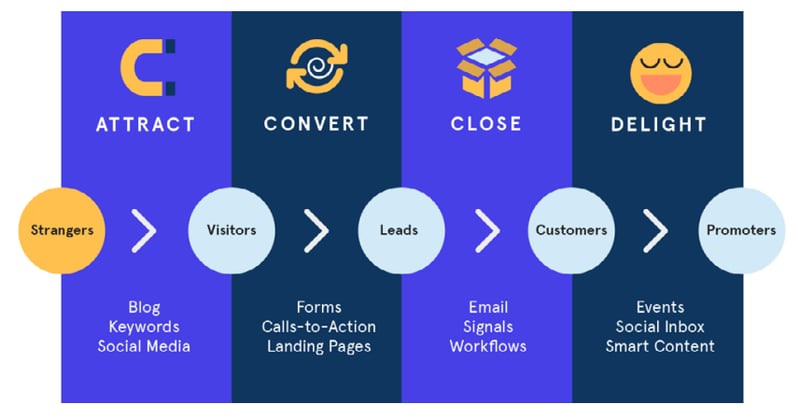‘You can’t sell anything if you can’t tell anything.’
— Beth Comstock
What is true of the company as a whole is also true of marketing. Next to product development, marketing is likely to be the biggest cost, the biggest risk and the biggest opportunity for B2B businesses. It pays to learn fast.
Most B2B businesses are experts in their chosen market or product sector. Fewer have expertise in marketing specifically. This increases the risks they face in this area when going it alone. It helps to have some insider knowledge, and we’ve got that by the bucket-load at Articulate Marketing.
This guide is intended as a roadmap for cost-effective content marketing. It outlines techniques that map onto the ‘lean’ methodology and provides the resources, tools and tactics you need.
This content was originally available as part of our ebook 'Cost-effective marketing for ambitious B2B companies'. As such, you have the option to download the original material as a PDF if you fill in this form:
Before we continue, here are two key principles you need to bear in mind.
A. Know your customers
Your ideal customers seem like the hardest to reach. They may not have heard of your business yet, and they are blind to conventional advertising, which then becomes a costly endeavour with little return on investment.
But, great content marketing cuts through the noise. Fundamentally, content marketing means that you:
- Go to where people are – social media, search engines and so on.
- Talk about things that matter to them.
- Use their language, not yours.
- Become a trusted advisor.
- Introduce your products and services in this favourable context.
B. Engagement not intrusion
‘Lean thinking defines value as providing benefit to the customer; anything else is waste,’ says Eric Ries. This is especially true of marketing.
Conventional approaches, such as advertising or outbound marketing, provide no benefit to the customer. It’s like a conversation where the other person constantly interrupts you to talk loudly about how great they are. You’re spending a lot of money just to annoy potential leads.
As an approach to marketing, this type of intrusion fails spectacularly. For example, the majority of TV viewers (86 percent) skip adverts if they can, and nearly half of all direct mail marketing material goes straight in the bin, though recent innovations have seen this slowly change.
Social media is on the up, but it’s a fast-moving, crowded field. If you don’t have something to contribute to the conversation, you’re just breaking eggs without making an omelette.
If you use online advertising, you already know the pain of keyword competition, rising costs and falling conversion rates. Worse, you need a PhD in Google AdWords to run a campaign. And you pay per click, not per advert. It’s the gift that doesn’t keep giving and isn’t great value for money IF you don’t know what you’re doing. If you do, or hire someone that does, however, it can make a positive impact.
Introduction to inbound content marketing
Research shows that inbound content marketing helps at every stage of the sales cycle. With content marketing, the traditional AIDA model of the sales funnel gives way to the Attract-Convert-Close-Delight model. Critically for small businesses, this approach lends itself to data-driven decision-making and A/B testing at every stage. This will ensure strategies are working and puts a stopper in any tactics that aren’t getting the ROI you need.

Attract
At this stage you use customer-focused content such as white papers, ebooks and blog posts to attract visitors to your website. You promote the content on social media, on your blog and through keyword search engine optimisation. Even in the early stages, this process gives you insight into customer pain-points and buying signals.
75 percent of inbound marketers would describe their marketing strategy as effective for attracting visitors and converting them into leads. Calls-to-action promoting ebooks get almost twice the click-through rate as emails promoting webinars. Blogs are also an essential element. B2B companies that blog generate 67 percent more leads and B2C companies generate 88 percent more leads.
Convert
During the convert stage, you’re looking to capture a visitor’s details, such as name and email address, as a lead. Calls-to-action on your emails, blog and website bring people to your landing pages, where a visitor must register their details on a form to get access to your most attractive, relevant content.
Landing pages with persona -targeted copy are a smart way to convert leads into customers. The more, the better. Businesses with 31 to 40 landing pages got seven times more leads than those with only one to five landing pages. Pay to sett hem up once, and they’ll keep delivering without incurring further costs.
Close
Using targeted, personalised emails you provide a stream of interesting content that keeps a customer coming back. As they provide more information each time, you can create workflows to score and qualify leads and to send them increasingly relevant material. Eventually, qualified leads move to your CRM system or sign up for your service.
Lead-nurturing emails and a drip feed of relevant content helps to convince leads to buy. In fact, nurtured leads make 47 percent larger purchases than non-nurtured leads. Relevant, personalised emails drive 18 times more revenue than broadcast emails.
Delight
Once a customer has signed up, content marketing can turn them into advocates. Material that turns a beginner into a power user or events that bring your most enthusiastic customers together can build advocacy.
Case studies and social media engagement turn customer success into a marketing asset.
Requirements analysis
Your marketing should be as agile as your development. Like content-driven inbound marketing, any strategy used in a B2B business needs to meet these six essential requirements:
1. Time-efficient
Time is in short supply for any business, as you race to add customers and turn a profit. Marketing strategies need to show a return on the time invested in them as well as the money. In addition, it needs to be easily outsourced so that businesses can do more marketing without spending more time on it. Measure the time you spend on marketing as well as direct costs.
2. Cost-effective
No business can afford to waste money. Any marketing activity needs to be cost-effective. HubSpot reckons that inbound marketing costs 61 percent less per lead than traditional techniques. But unlike advertising or PR, it leaves you with marketing assets, such as collateral and customer contact details, even once a specific campaign is complete.
3. Measurable
You need to be able to measure the cost per lead and the cost per customer from any marketing activity so you can compare tactics and optimise your approach. This means that you need to be able to track leads from their first visit through a lead nurturing process into your CRM system or sign-up process. Use the lifetime value of the customer and the total cost of marketing to calculate an ROI for campaigns.
4. Integrated
You should be able to see a visitor become a lead and then drop into your CRM software or an app trial program before becoming a customer — the whole process should be joined-up so that you get a single view of each customer’s entire journey. Similarly, you should get automated reports about the effectiveness of campaigns and marketing activity.
5. Testable
You need to be able to break out different activities into campaigns and track costs and results on a campaign-by-campaign basis so you can see which ones work. On a more tactical level, you should be testing different types of content, advertising approaches, calls-to-action and landing pages on a constant basis.
6. Responsive
Any marketing activity needs to respond to changes in the business: strategic pivots, changes in emphasis between traffic generation, lead nurturing or conversion, new markets or potential customers. A responsive marketing strategy means more than the ability to choose different keywords for Google AdWords. You need an approach that you can fine-tune to meet the needs of the business. It must also be repeatable and scalable.
Managing marketing for the ambitious B2B company
It’s a lot of work to maintain a successful content marketing strategy, but if it’s done right, the returns are well worth the effort – HubSpot has found that 96 percent of B2B buyers are looking for content from industry thought leaders. Dedicate yourself to a thought-through marketing strategy with genuinely valuable content, and you’ll become one of those thought leaders, attracting the B2B buyers looking for input from experts.
It’s crucial to know when your in-house marketing team — if you have one — needs help. The financial outlay may seem unattractive at first, but drafting in the experts at a marketing agency can be a boon for your web traffic and lead generation. It will help you maintain a quality content marketing strategy. If your team is overwhelmed, you run the risk of sending bad writing out into the world, as well. This could end up costing you more than it earns.
If you don’t already have a marketing team, consider the fact that hiring an agency is also likely to be cheaper than hiring in-house marketers. Reaching out to an agency with a team of experts in content and web development means that you have an entire group of professionals for the price of a retainer, without having to hire and manage each individual yourself. Hiring is an expensive process, often running into thousands of pounds per new employee on top of salaries, pensions, training et al. So, get in touch if this sounds like a good deal to you.



![100+ B2B Lead Generation tips for inbound marketing [2023]](https://www.articulatemarketing.com/hs-fs/hubfs/Blog%20Illustrations/Green/A%20circular%20pattern.jpg?width=400&height=250&name=A%20circular%20pattern.jpg)